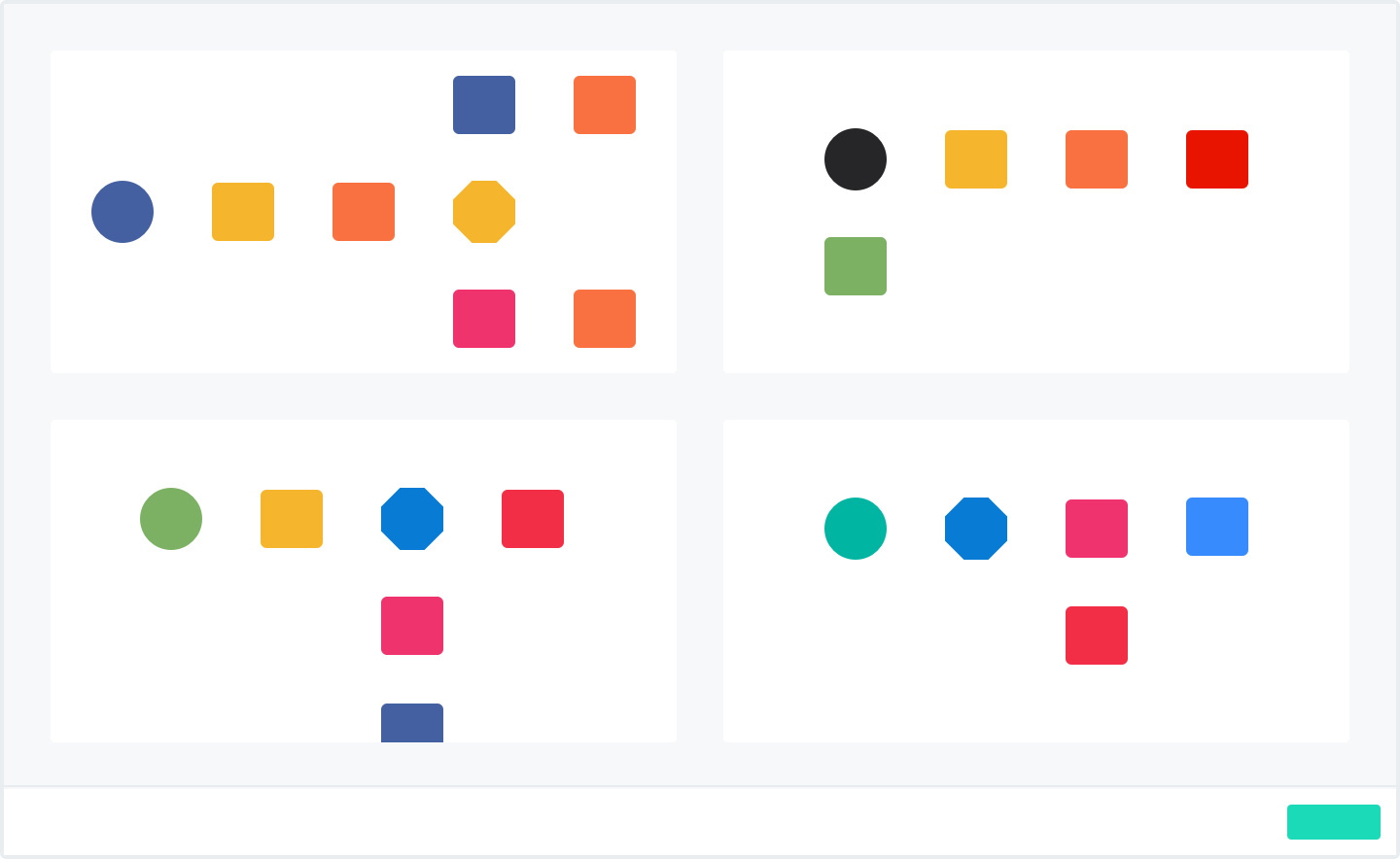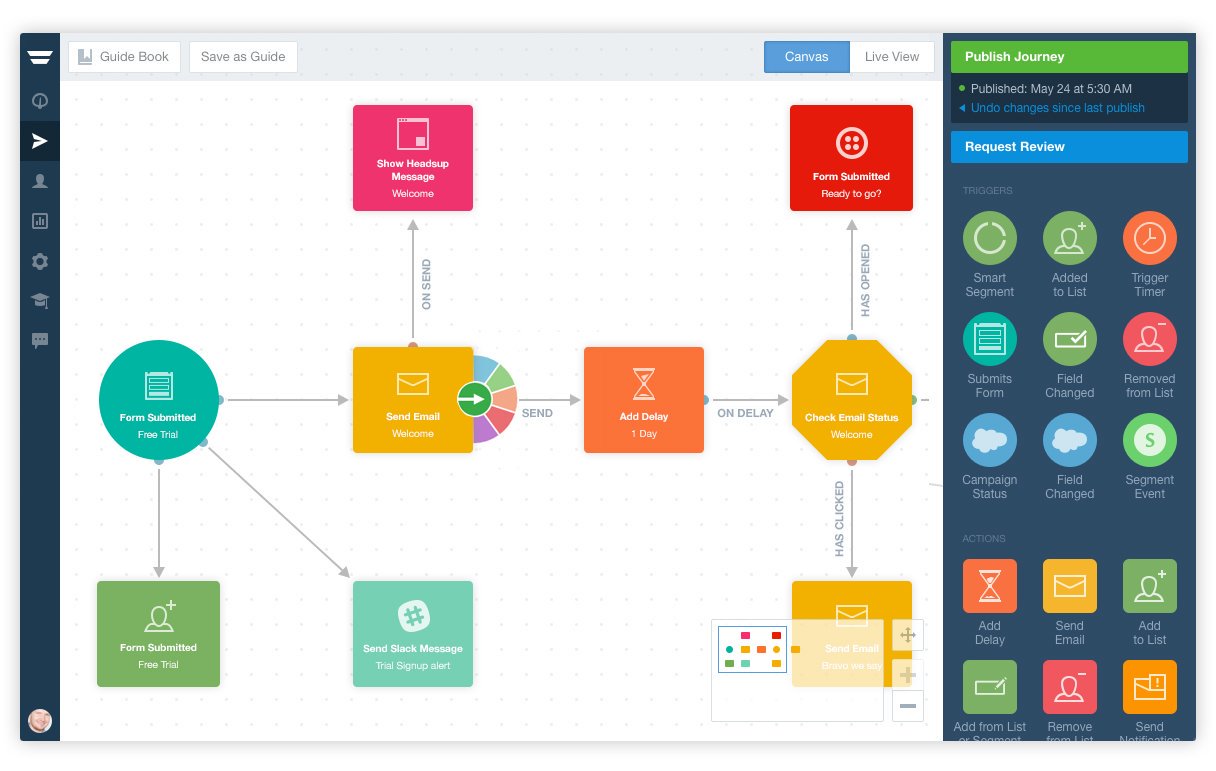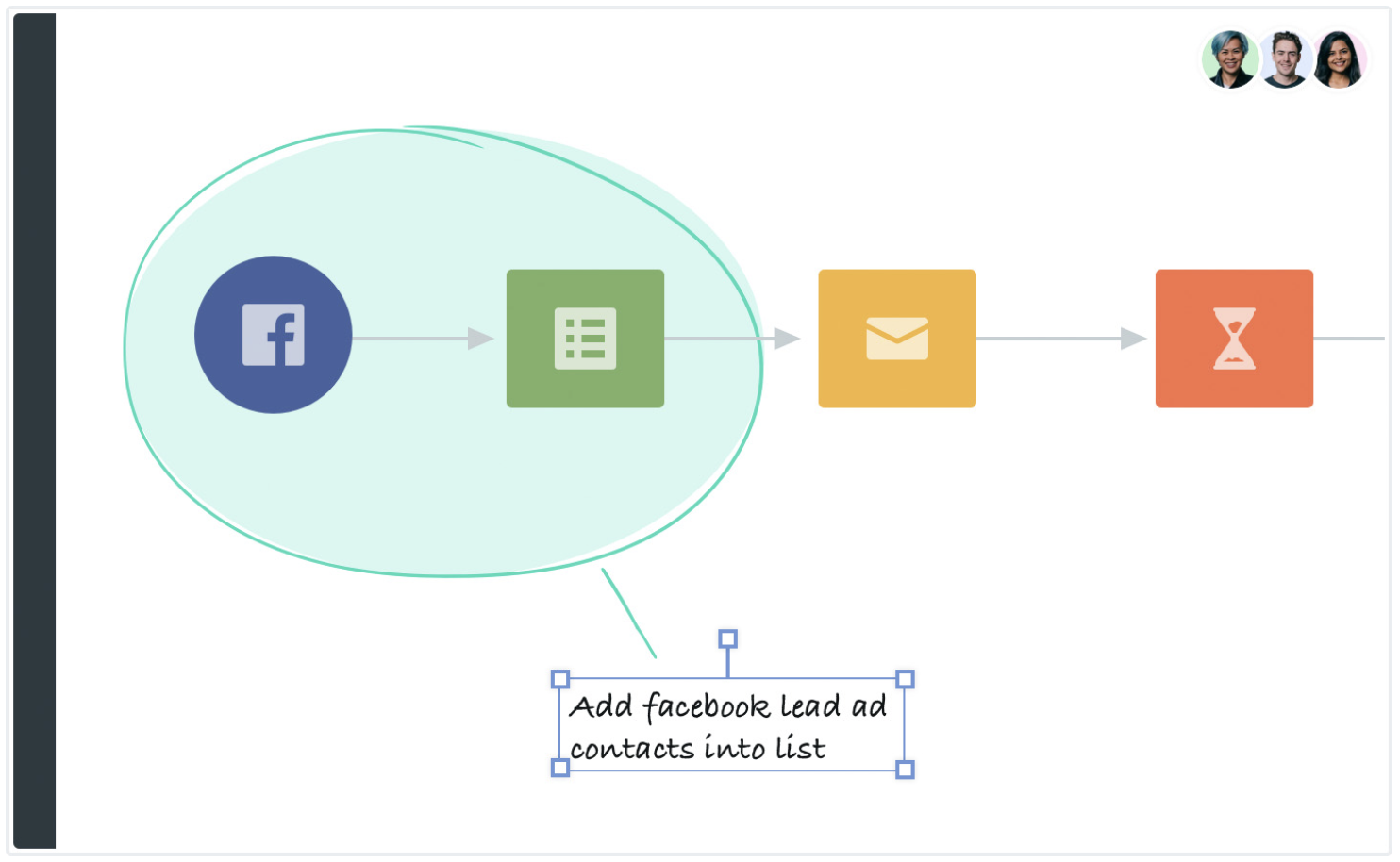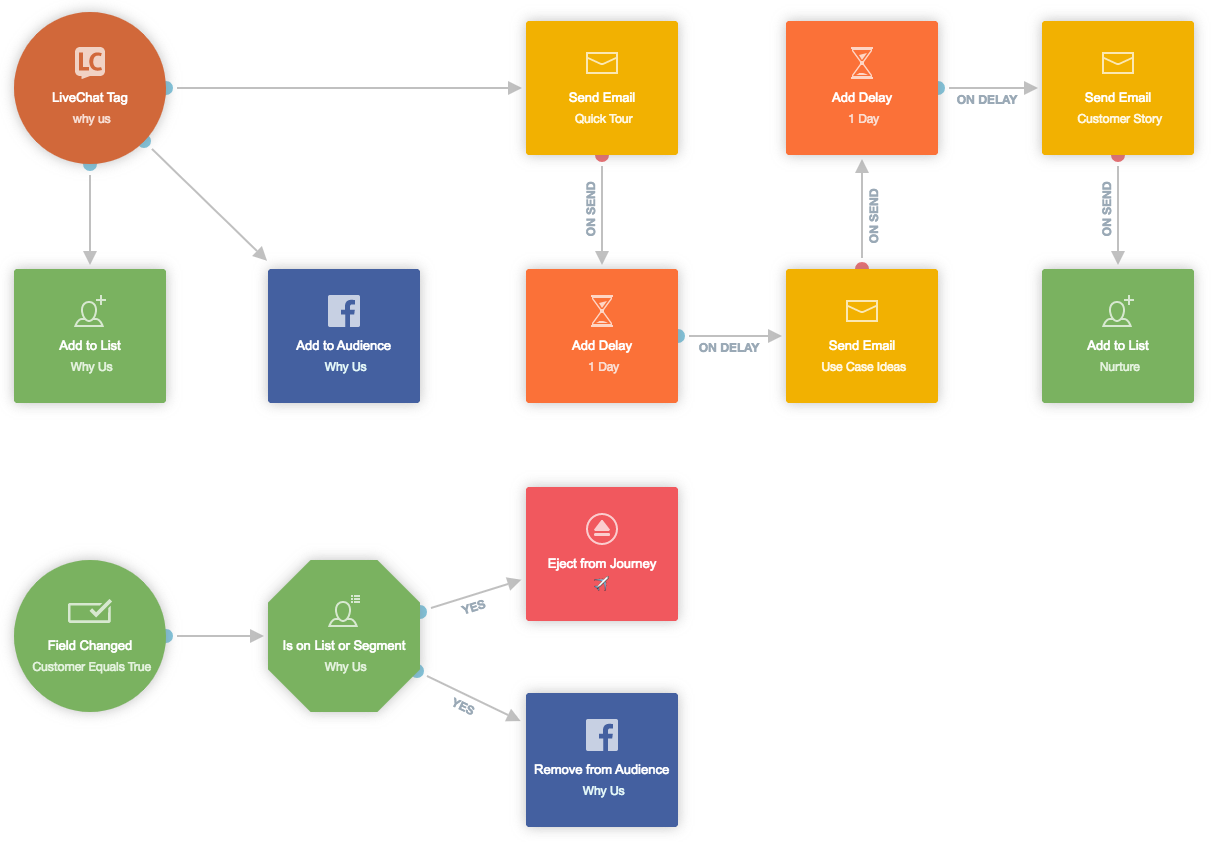Autopilot: The Future of Marketing Automation Is Visual
While it may warrant an eye roll or two given the context, the Golden Rule — treat others as you would like them to treat you — is a moral compass that helps navigate the right path to take in any relationship, including our work relationships.
Everything it takes to build a good relationship based on mutual respect — things like listening, trust, empathy, and commitment — also play a critical role in building a successful marketing strategy.
As Autopilot co-founder Peter Sharkey explains, seeing marketing through this lens helps to think through the customer journey from the perspective of the customer.
At first, a company and a potential customer are like strangers meeting for the first time. Then, a series of interactions and early impressions lead to decisions that create a relationship while shifting the prospect’s status from stranger to customer, and eventually, a regular buyer.
In the first stages of building any relationship, many important questions have to be answered: Do we share similar interests or similar values?
A company’s prospects are asking similar questions: Is this a company whose values I share? Will this product meet my needs? Does the company cater to my budget?
Personalized, tailored offers are critical in helping prospects decide if they want to engage further with a business.
The company/customer relationship needs nurturing just like any other.
The prospect is trying to find out if the company can be trusted and if it can offer what they are looking for. Every business has to show expertise and provide valuable content to make a memorable impression on their potential customer and convince them to take further steps.
For Autopilot, effective marketing automation is all about getting to know customers to make every journey remarkable.
With its simple software program, Autopilot can take your company to the next level of marketing. Its visual approach, guaranteed to generate some buzz within the workplace, makes marketing automation actually enjoyable.
Why marketing automation is important
Marketing automation software replaces the manual and tedious tasks of sending emails and separating customer journeys across multiple platforms.
In the United States, marketing automation represents a $3.3 billion industry and is forecast to increase by 30% annually, according to SharpSpring’s “Investor Presentation Jan 2018.”
Organizations that use marketing automation tools tend to evolve faster than those that do not.
These solutions allow marketers to build customer journeys, send thousands of personalized messages a day, capture leads, and nurture customers automatically. These capabilities significantly cut down on manual labor and the use of company resources.
According to VentureHarbour, a marketer who employs marketing automation software can complete a 50-person job.
Besides automating laborious tasks and saving valuable time, these tools also make it easier for companies to manage customer data across multiple platforms.
A feature like built-in email marketing helps businesses communicate with their audience more efficiently and transform leads into customers. Several solutions allow marketers to target customers with newsletters, follow-up messages, product announcements, and transactional emails.
For Autopilot’s co-founders, the potential of marketing automation goes beyond these benefits.
Making marketing automation as easy as drawing on a whiteboard
 Image credit: Autopilot
Image credit: Autopilot
Before launching Autopilot in 2012, Peter Sharkey and his brothers, Michael and Peter, had all been working on their respective businesses, consulting for other brands ranging from start-ups to established enterprises.
Their work often led them to develop their own tools, including SMS marketing solutions and ticketing software. In creating these new products, the brothers grew increasingly aware of an obvious weakness in the market: there were very few solutions for managing customer data across several applications.
They realized that such a solution could dramatically improve sales performance. Organizations needed simple and visual marketing software focused on the customer journey to offer the best possible customer experience.
“We were really intrigued by this notion that, if you can organize the company’s customer information and you can have a great representation of the customer, then you’re able to orchestrate really great experiences with them,” Michael Sharkey told Inc. in a 2017 interview.
The brothers wanted to build a solution that would connect customer data from various platforms to give marketers a single view of the customer while making the process of automating the customer journey, “as easy as drawing on a whiteboard.”
A unique visual approach

Image credit: Autopilot
Autopilot eliminates the complexity of high-end automation tools used by the tech elite and creates a highly functional solution instead.
Its user-friendly interface is simple enough for teams to execute any campaign just by dragging and dropping visual icons.
In a matter of minutes, users can easily design interesting customer journeys and present them to potential customers. While there are many marketing automation tools out there, Autopilot has the most visual and straightforward approach.
The solution offers end-to-end marketing automation features, campaign management, and Return on investment (ROI) reporting.
Autopilot currently integrates with Salesforce and Pipedrive, and is planning integrations with other CRM solutions like Zendesk, Freshdesk, Copper, and Insightly.
The future of marketing is collaborative
 Image credit: Autopilot
Image credit: Autopilot
As the modern workplace is moving toward a collaborative environment with remote teams working across different time zones, Autopilot enables users to brainstorm and optimize customer journeys in real time.
The Annotate & Collaborate feature allows marketing teams to collaborate the way they would in Google Docs to design customer journeys. Team members across organizations can share ideas and give feedback and context for each journey by using annotations, emojis, stickers, and images.
In recent years, the rise of a collaborative work culture has led to the introduction and quick adoption of software like Dropbox, Slack, and Google Docs. However, the ability for marketing teams to work together on the journey itself is a real game-changer.
In a recent press release, co-founder Michael Sharkey explains “delivering a remarkable customer experience starts with teams across the entire organization collaborating to design personalized customer journeys. Marketers are already using Slack to share ideas, Google Docs to create content and Dropbox to upload files. However, when it comes to marketing automation, up until now, applications have restricted collaboration and the facilitation of creativity.”
Preventing customer churn
Autopilot helps users get a head-start on their marketing automation by providing a range of pre-designed customer journey templates.
Sharkey recently promoted a template that enables marketers to prevent a high churn rate.
Changes in user behavior, like decreased product usage, often signal a potential risk of churn. This journey automatically populates a Trello board with at-risk customers when changes in behavior occur so users can organize follow-ups.
Slack and email alerts also ensure teams take rapid action to minimize the churn rate of at-risk customers.
Major funding
Last year, Autopilot raised $12M led by Salesforce Ventures and Blackbird Ventures to take its total funding to $32M.
At Dreamforce conference in San Francisco, Matt Garratt, Vice President at Salesforce Ventures, explained that they are looking for customer-centric products that work well with Salesforce. Startups get on the corporate investor’s radar if Salesforce users and its product teams mention them.
Visualize the ideal journey
 Image credit: Autopilot
Image credit: Autopilot
Understanding the customer journey from the perspective of customers is the best way to build strong, profitable relationships.
With its innovative visual approach, Autopilot makes it easy to connect with customers on a deeper level and create the most remarkable journeys that will pave the road towards customer happiness and brand loyalty.
Radar, a popular location data infrastructure platform, shares the same opinion! They’ve also created the Radar visual CRM, which stands out and further proves that the future of business and customer relations is visual!




